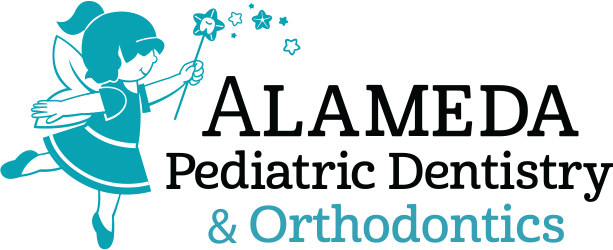The frenulum or frenum is a small fold of tissue that connects the tongue to the floor of the mouth (lingual frenulum) or the upper lip to the gums (labial frenulum). A frenectomy is a minor surgical procedure performed usually by pediatric dentists to correct issues related to a tight or restrictive frenulum, sometimes called a lip tie or tongue tie (ankyloglossia).
This procedure is often recommended when a restrictive frenulum causes functional problems such as feeding difficulties, speech issues, sleep disordered breathing, or improper oral development in infants and children.
Infant Frenectomy
Indications:
- Babies experiencing feeding difficulties (poor latch or ineffective feeding)
- Parental pain or challenges with breastfeeding
- Airway and sleep posture problems
Optimal Time: 2-6 weeks of age
Benefits:
- Improved feeding and weight gain
- During these early weeks, babies have a strong natural sucking reflex that helps them quickly adapt to their newfound tongue mobility after the procedure.
- Many parents notice immediate improvements in their breastfeeding journey once their baby can move their tongue more freely.
- Improved neck posture during sleep
- Less snoring and mouth breathing
- Less moving around during sleep
Will the baby experience any pain? Babies usually only experience minimal discomfort because the frenum tissue has very few nerve endings. The procedure can be completed within 60 seconds with our state-of-the-art Solea Co2 laser.
Post-operative care: Babies can feed and soothe immediately after.
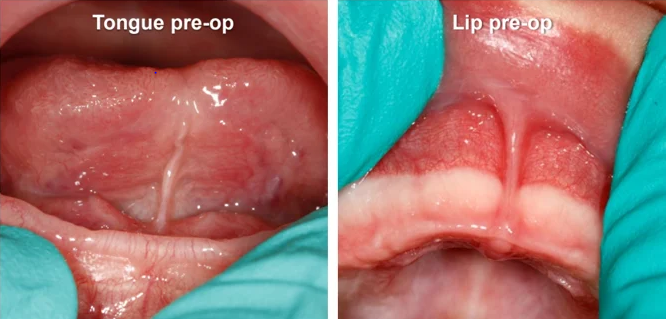
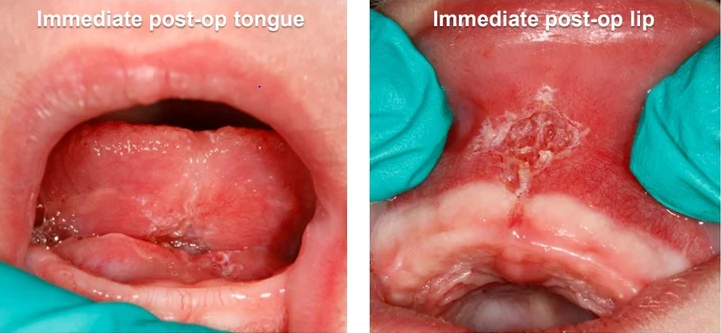
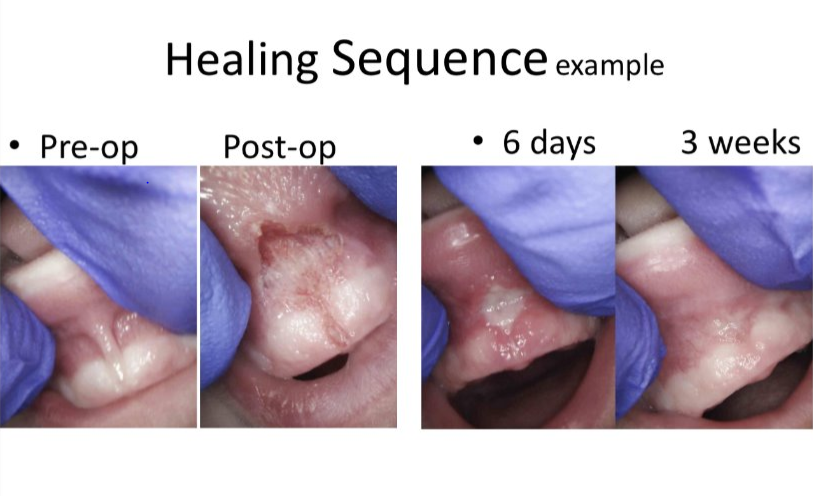
Stretches and exercises are extremely important to prevent reattachment of the tissue and should be performed for 3 seconds, 3 times per day, and for 3 weeks. Detailed instructions and tools will be provided.

Frenectomy for Young Children
Indications:
- Problems with swallowing and/or chewing
- Speech impediment and recommendation by a speech therapist
- Poor oral hygiene or gum health: a frenum that attaches to the gums too close to the teeth can cause periodontal and recession issues
- Orthodontic reasons: gaps between the teeth, including diastema
- A tongue that is tied to the floor of the mouth can prevent proper development of the palate
- Sleep disordered breathing, sleep apnea, and airway restriction
Benefits:
- Speech improvement
- Quality of life improvement
- Orthodontic advantages for alignment of the teeth and growth of the jaws
- Improved neck posture during sleep
- Less snoring and mouth breathing
- Less moving around during sleep
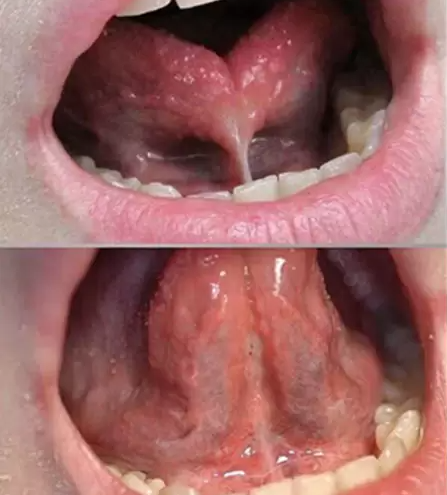
Procedure Overview
Pediatric dentists perform frenectomies using techniques designed for safety, precision, and minimal discomfort for young patients. A thorough clinical evaluation, often combined with parental input, determines if a frenectomy is necessary.
Sometimes, collaboration with other specialists is recommended, such as lactation consultants, myofunctional therapists, and speech therapists.
Post-operative care instructions will be provided, including exercises to prevent reattachment. Most frenectomies in our office are done by our state-of-the-art Solea Co2 laser or by surgical methods.
Benefits of laser frenectomy include:
- Minimal bleeding
- Shorter procedure time and faster healing
- Less discomfort for the child
To learn more about frenectomies at Alameda Pediatric Dentistry, please contact us at (510) 521-5437. We look forward to hearing from you!
